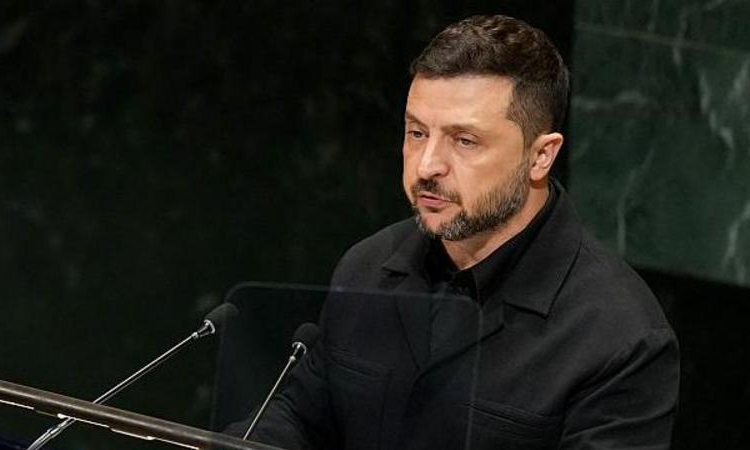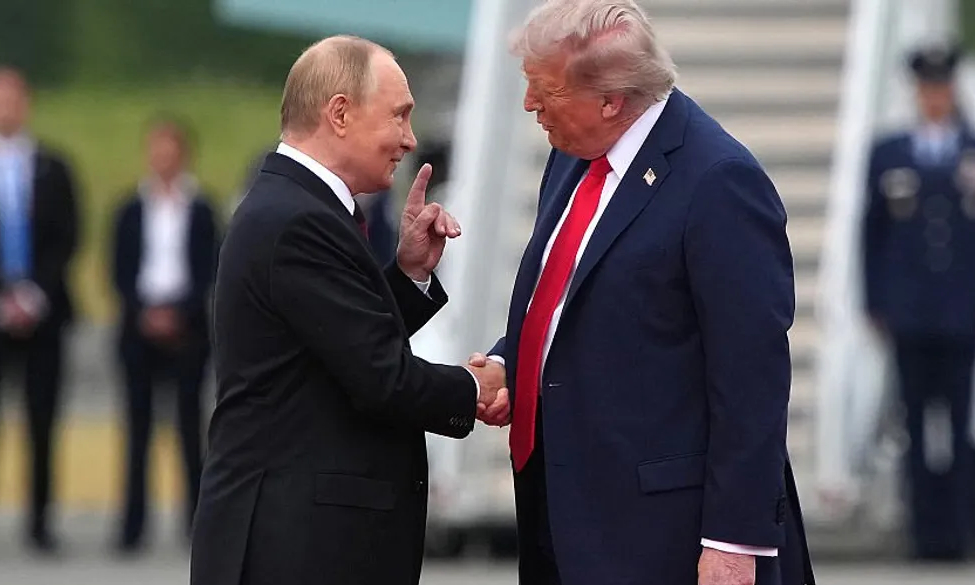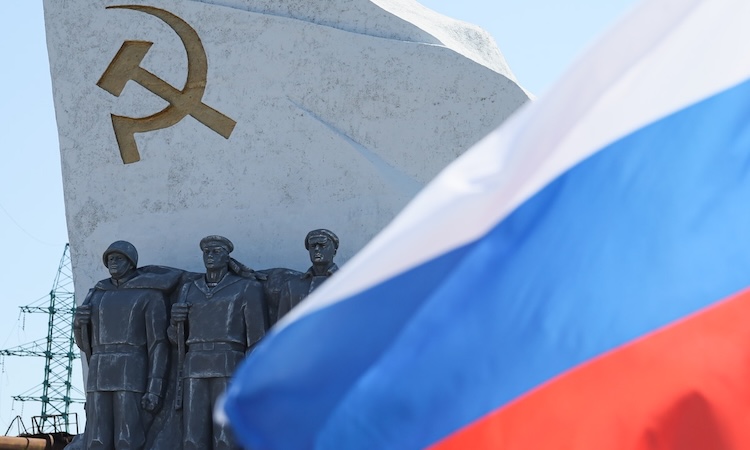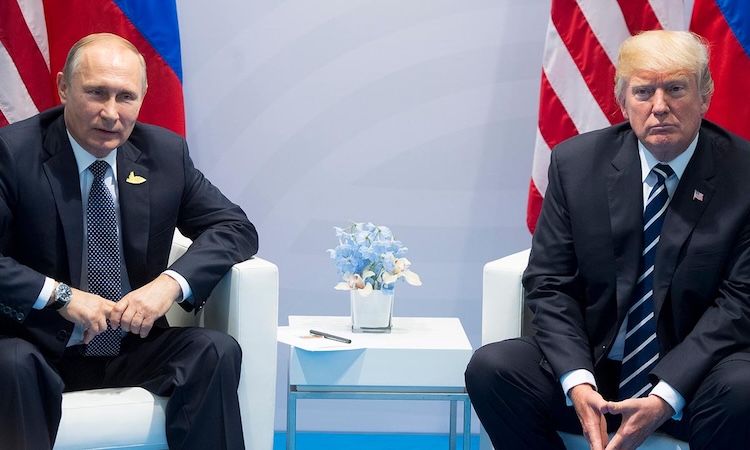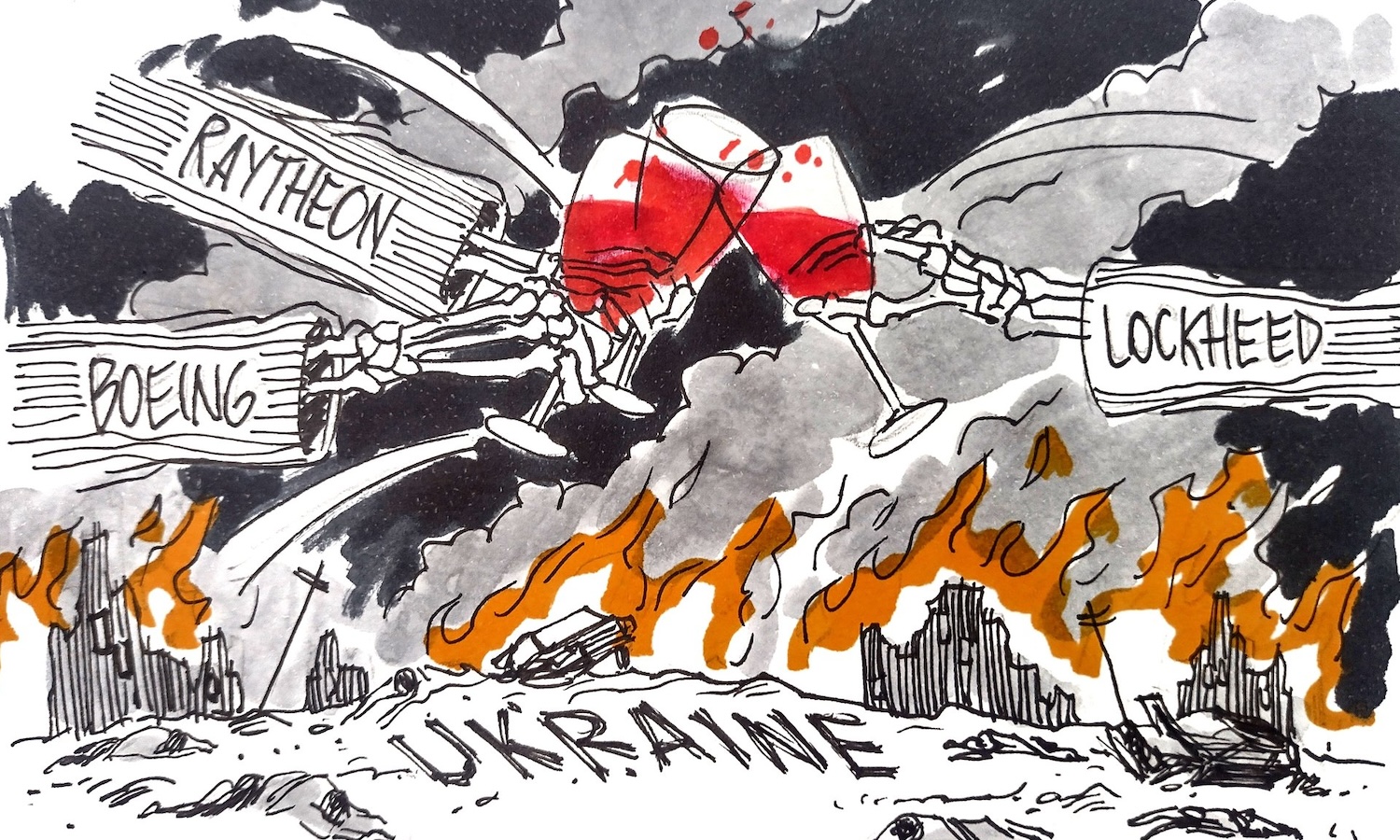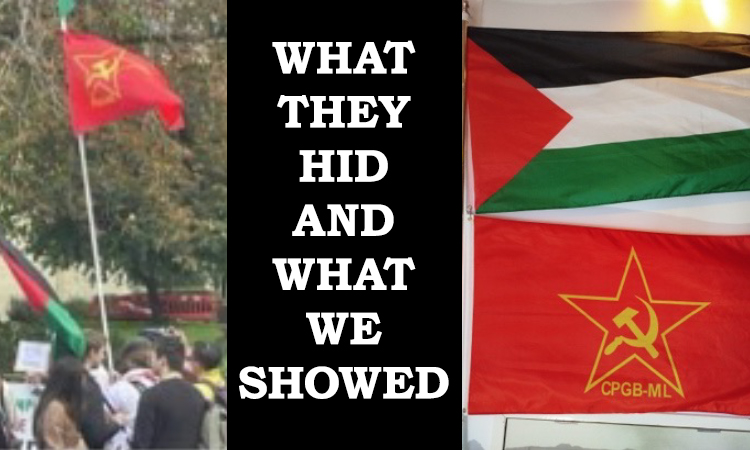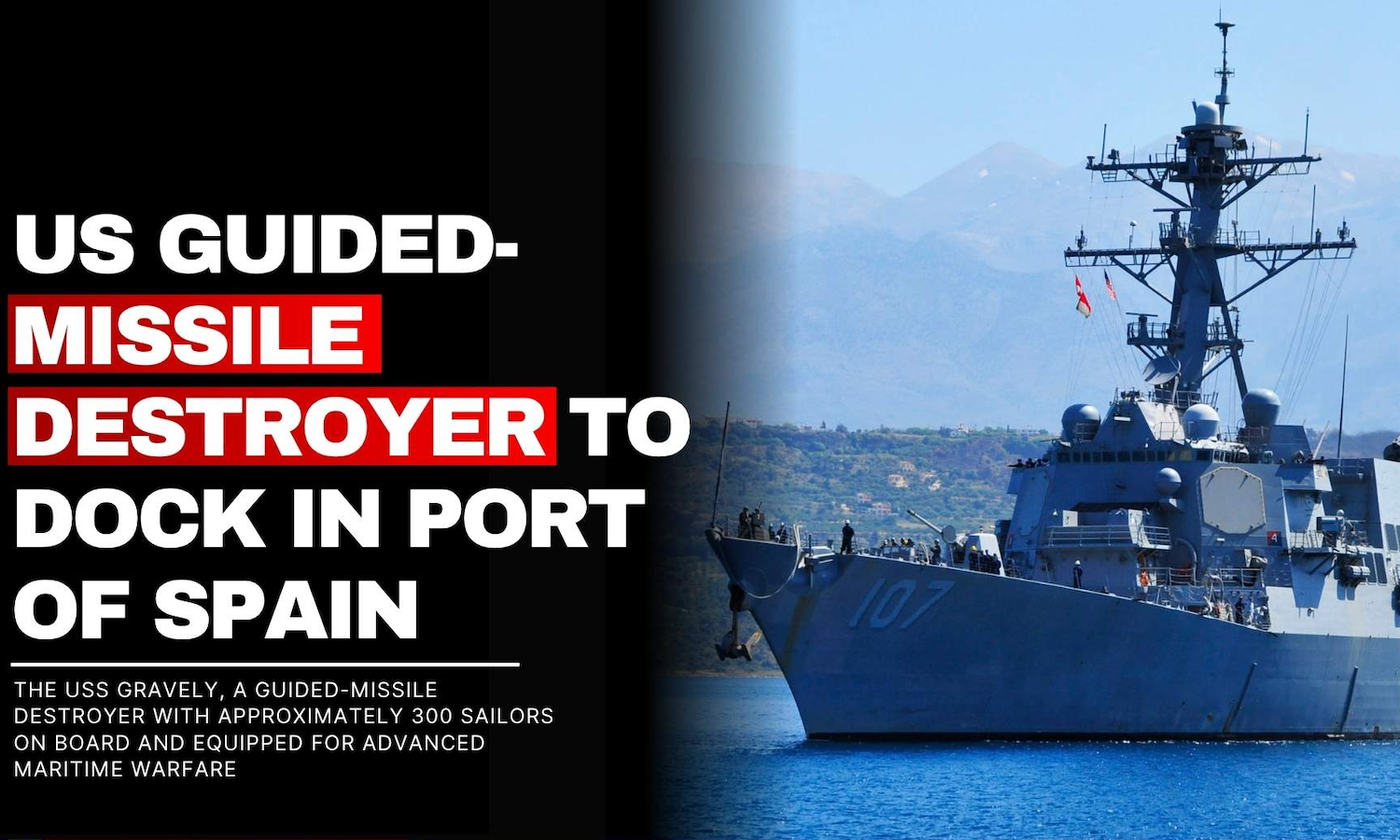Russian forces are now in full control over the city of Avdeyevka whilst thousands of Ukrainian troops remain there trapped in isolated pockets. Their command structure has broken down and there is little effective communication between units.
In an attempt to turn this around, the fascist Azov brigade was sent in to clear the mess but succeeded only in becoming part of the mess themselves. They were last heard of “firing at 360 degrees” – army-speak for being surrounded on all sides and hoping for the best.
It is a mark of how bad the situation is for the Kiev junta that the mainstream media are not even trying to cover up the seriousness of this development. The capture of Avdeyevka is the biggest Russian advance since taking Bakhmut last May and opens the way to full control of the entire Donbass.
News of this great Russian victory reached the Munich security conference on Saturday 17 February, just in time to rub the noses of the collective west in the failure of all their regime-change hopes. Needless to say, for the second year running Russia was not invited to this jamboree, but happily found other ways of making her presence felt.
Thieves fall out
The fall of Avdeyevka was preceded in Ukraine by the sacking of one former commander-in-chief and his replacement by a protégé of actor-stooge president Volodymyr Zelensky. This move was preceded by a long period of rumour and counter-rumour, giving ample scope for conspiracy theories and departmental backbiting to weaken and distract the high command when it most needed unity and concentration.
Were it not for the fact that the fate of thousands of lives hangs upon the say-so of these clowns, it would be hard to ignore the comic opera feel to the shenanigans surrounding the summary dismissal of Kiev’s army chief, General Valerii Zaluzhny, and his instant replacement by the commander of armed forces, General Oleksandr Syrskyi, with everyone briefing against everybody else in full public view and even, it is rumoured, with Zaluzhny initially refusing point blank to accept his sacking.
As with so much else in Ukraine’s public life, the actors in this drama, rather than coming across as political giants joined in a titanic struggle to determine the future of their country, appear rather as historical nonentities trying on their grandfathers’ clothes in the wings.
The departing General Zaluzhny is said to be a popular and influential leader, and one who is not afraid to voice his dissent on occasion. In particular, he has criticised President Zelensky’s conduct of the war against Russia, especially the disastrous failure of the so-called ‘summer offensive’. Conversely, Zelensky blamed Zaluzhny for that same disaster.
According to the Economist: “It is no secret that, as their relationship worsened, the two men also came to differ about what to do on the battlefield. Mr Zelensky and his administration held General Zaluzhny responsible for last year’s failed counteroffensive.
“They wanted the Ukrainian army to prepare for further attacks and had been pressing him to draw up battle plans and to take on the unpopular burden of mobilising more troops. The general rejected their arguments. He observed that his caution after the failure of the initial assault ended up sparing vital troops and equipment.
“He argued that he could not plan for the next counteroffensive unless he knew what resources he had. He said that it is politicians’ responsibility to mobilise society – and he was right.” (The dismissal of Valery Zaluzhny is a crucial new phase in the war, 8 February 2024)
In other words, it seemed that Zaluzhny had exhibited a habit of thinking out loud which threatened fatally to undermine Zelensky’s defiantly rose-tinted view of things. With Zaluzhny gone, his place has been taken by the land forces leader General Syrskyi. Unlike his predecessor, he is said by some to have concentrated on fulfilling whatever mission he was given and not questioning his brief.
He is said to be a close ally of Zelensky, accompanying the president on a number of well-documented visits to the front line. Among the rank-and-file soldiery, though, his reception is not uniformly warm. According to the Financial Times, he was criticised for his “refusal to retreat during the battle of Bakhmut, a fight that saw precious ammunition expended, thousands of troops lost and experienced brigades decimated”.
These enmities had rankled on throughout the war but have now ripped to the surface in consequence of the collapse of Ukraine forces and the increasingly toxic atmosphere of mutual recrimination that this has unleashed.
Switching the top brass may buy Zelensky some time, putting off the evil hour when real decisions have to be made about Ukraine’s future. But pressing on with mobilisation plans will only pile more Ukrainian lives into the meat grinder and do nothing to alter the outcome of the war, merely driving up the death toll and intensifying demoralisation.
Begging the west for more firepower may enable a few more terrorist spectaculars like the drone attacks in the Black Sea, but will likewise do nothing to reshape the war in Kiev’s favour. Sooner or later, Zelensky, or Zelensky’s successor, will be obliged to sue for peace, and it won’t be on the basis of the president’s increasingly hollow assertion that Ukraine will “take back every inch of soil occupied by Russian forces”.
So unignorable is the scale of the military crisis in Ukraine and the desperate efforts to mobilise everything that moves to plug the gaps in the ranks, that even the mainstream press feels obliged to start documenting it. This bleak assessment comes from the Washington Post:
“In interviews across the front line in recent days, nearly a dozen soldiers and commanders told the Washington Post that personnel deficits were their most critical problem now, as Russia has regained the offensive initiative on the battlefield and is stepping up its attacks.
“One battalion commander in a mechanised brigade fighting in eastern Ukraine said that his unit currently has fewer than 40 infantry troops – the soldiers deployed in frontline trenches who hold off Russian assaults. A fully equipped battalion would have more than 200, the commander said.
“Under normal circumstances a mechanised battalion is supposed to hold a 3km-long frontline. With only 40 infantry soldiers available that becomes an impossible task. The further deterioration from that depleted state will be rapid.
“Oleksandr, a battalion commander, said the companies in his unit on average are staffed at about 35 percent of what they should be. A second battalion commander from an assault brigade said that is typical for units that carry out combat tasks.
“Asked how many new soldiers he has received – not including those who have returned after injuries – Oleksandr said his battalion was sent five people over the past five months. He and other commanders said the new recruits tend to be poorly trained, creating a dilemma about whether to send someone immediately onto the battlefield because reinforcements are needed so badly, even though they are likely to get injured or killed because they lack the knowhow.
“‘The basis of everything is the lack of people,’ Oleksandr said.
“‘Where are we going? I don’t know,’ he added. ‘There’s no positive outlook. Absolutely none. It’s going to end in a lot of death, a global failure. And most likely, I think, the front will collapse somewhere like it did for the enemy in 2022, in the Kharkiv region.’
“The new Ukrainian mobilisation law, which is supposed to refill the army with fresh bodies, is still creeping through the Ukrainian parliament. It will likely come into force only by April. The first new troops conscripted under it will take until July to be combat capable. One wonders if the current Ukrainian army can hold that long.” (Frontline Ukrainian infantry units report acute shortage of soldiers by Isabelle Khurshudyan and Anastacia Galouchka, 8 February 2024)
Standing with Ukraine?
Back in Washington, where the whole Ukraine project was dreamed up in the first place, Congress is dragging its collective feet over if or when its latest military aid package to the Kiev junta will be ratified. Though in theory it is the Republicans who are holding everything up and the ruling Democrats who are getting frustrated in their efforts to get urgent military aid to Ukraine, in practice disillusion with the whole project is rife on both sides of the hall.
With Donald Trump, fresh from victory in the Republican party caucuses in Nevada, now setting his sights on a second term as US president, his open scepticism about international alliances like Nato and the European Union (let alone the United Nations and Unrwa) sends a clear signal as to what kind of long-term support, if any, the Kiev clique can expect to get from a Trump presidency.
Whilst Nato secretary-general Jens Stoltenberg continues to intone dutifully the mantra that “Any suggestion that allies will not defend each other undermines all of our security, including that of the US, and puts American and European soldiers at increased risk,” Trump nonchalantly blows the gaffe on the whole Nato protection racket, telling reluctant payers he would encourage Russia to do “whatever the hell they want” if they failed to hand over two percent of their GDP, saying: “I would not protect you. In fact, I would encourage them to do whatever the hell they want. You’ve got to pay. You’ve got to pay your bills.”
While Jens Stoltenberg struggles to keep the door ajar for Ukraine’s Nato candidacy, Trump is busy undermining whatever confidence remains in the institution. In these circumstances, Stoltenberg’s avowed expectation that “regardless of who wins the presidential election the US will remain a strong and committed Nato ally” will be greeted with hollow laughter. (Donald Trump says Russia can do what it wants to Nato allies who pay too little by James Politi, Lauren Fedor and Henry Foy, Financial Times, 18 February 2024)

